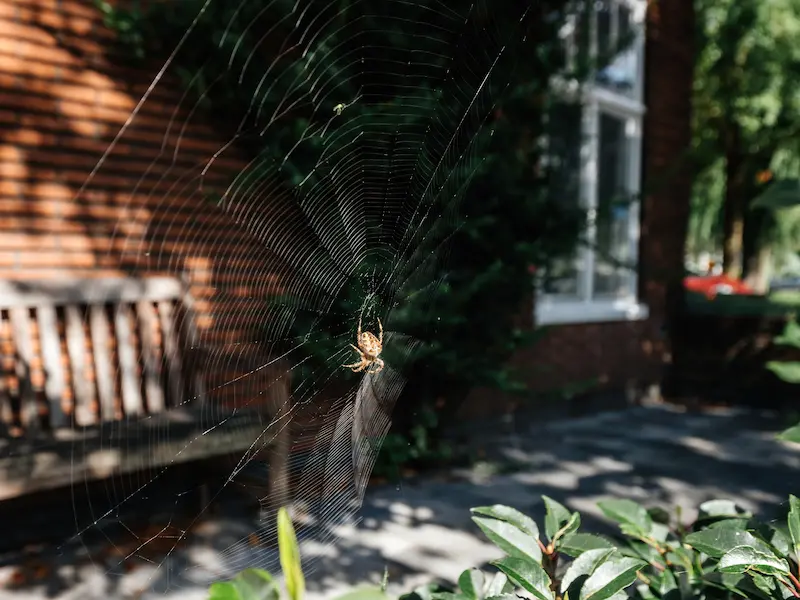
Key Points to Consider:
- While it feels like spider numbers increase during autumn, their overall population actually falls as weather cools and prey becomes harder to find.
- You’ll likely see more spiders indoors because they migrate inside, seeking warmth and shelter.
- With more time spent at home during cooler months, you naturally encounter them more often.
- Tiny gaps in your home’s exterior, around windows, doors, foundations, offer spiders easy entry points.
If you keep noticing spiders crawling around or more webs appearing in the fall, you’re not imagining it, there’s a logical reason behind it. As temperatures drop and daylight fades, spider behavior changes. Although many spiders die off when their food sources dwindle, others actively head inside, looking for warmer indoor spaces. That shift is what makes them far easier to spot.
These seasonal transitions prompt spiders to change their typical routines as they begin moving, rebuilding webs, and establishing new territories.
Are Spiders Truly More Active in the Fall?
Not really, although it may seem that way. Their activity doesn’t necessarily increase, but you’re more likely to observe them. Here’s why:
- In spring, spiders are small and less noticeable, even though they are present.
- Summer brings lots of prey, and spiders can hunt outdoors without much effort.
- As autumn arrives, many spiders migrate indoors in search of better conditions.
- Larger spiders, which are easier to spot, tend to have a better chance of surviving into the cooler season.
- With fewer insects flying in fall, web-building spiders construct larger webs, making them more visible to you.
What Do Spiders Do When the Cold Sets In?
When colder weather arrives, spiders face serious survival challenges, just like the insects they feed on. Many won’t survive, but some species are built to endure the season.
Certain spiders develop a survival mechanism called cold hardening, which allows them to withstand lower temperatures. They often hide under bark, among leaf piles, in bushes, or beneath overhangs. Naturally, the warmth and shelter of a home is even more appealing.
Spider behavior varies by species. Some lay eggs in fall, while others do so in spring. Freezing temperatures can destroy eggs, but the silk sacs produced by spiders often offer protection until environmental conditions improve.
Spider Types Frequently Seen in Fall
- Wolf Spider
- Garden Spider
- Common House Spider
- Cellar Spider
- Yellow Sac Spider
- Orb-Weaver Spiders
How to Prevent Spiders from Invading Your Home
Because spiders can slip through surprisingly small openings, prevention is your best approach. Here’s what to do:
- Seal cracks and openings around your home’s foundation, walls, windows, and doors.
- Repair or replace torn screens.
- Install door sweeps or weatherstripping to eliminate gaps under exterior doors.
- Clear clutter inside and around your home to reduce hiding places.
- Keep landscaping trimmed and away from exterior walls.
- Regularly vacuum corners, ceilings, and other less-disturbed areas to remove webs and egg sacs.
- Schedule consistent pest control services to maintain full protection and peace of mind.
Are Spiders More Dangerous in Fall and Winter?
No, they aren’t more venomous or aggressive in colder seasons. You might just be closer to them. Indoors, they often settle near baseboards, in corners, or by damp areas like laundry rooms.
Spiders generally won’t bite unless threatened or trapped. Outside, most species become less active when the weather cools, venturing out only on warmer days before returning to their hiding spots.
Don’t Let Spiders Take Over, Call the Experts at Schendel Pest Services
Spiders play their role in nature, but you shouldn’t have to share your home or business with them. When spider sightings keep increasing and routines end up disrupted, turn to Schendel Pest Services for professional, dependable spider control that delivers lasting results.
Contact Schendel Pest Services today for expert spider removal and prevention services in Kansas, Missouri, Arizona, & Arkansas.










